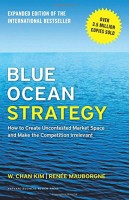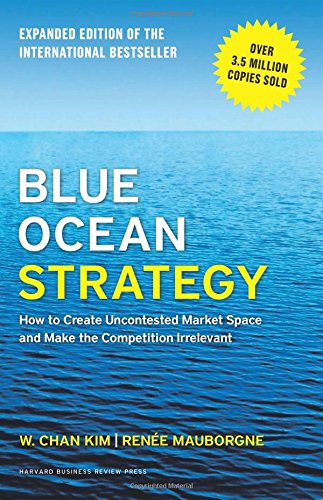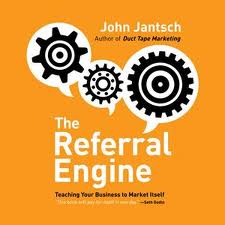 Authors: W. Chan Kim and Renee Mauborgne
Authors: W. Chan Kim and Renee Mauborgne
Publisher: Harvard Business Review Press – 287 pages
Book Review by: Sonu Chandiram
This book is a bestseller on www.Amazon.com. It has a super high rank with just four digits: 2,337. In Amazon’s marketplace where tens of millions of books are sold, this is a very enviable position to be in. A book’s ranking on Amazon rises as more copies are sold.
The authors write that in the 10 years since it was published, more than 3.5 million copies of this book have been sold. There is good reason why it has become such as a huge success, as you read below of the value it provides.
Very often, competitors force company owners and managers to cut prices and settle for thinner gross margins in order to keep market share. But price-cutting usually does not stop but goes on, as sellers of same or similar products slash their prices further to grab a larger market share.
In turn, company managers cut prices further in order not to lose customers, or get badly-needed revenue, often just enough to cover product costs and operating expenses, resulting in a small to zero profit.
And as competition continues, there is often no other course of action left except now to cut operating expenses, including laying off employees. This brings down employee morale, sometimes including staff in the sales department, a critical part of a company that keeps it afloat.
Layoffs also hurt productivity in other departments, causing lower product quality, slower delivery, and substandard customer service, all of which are disadvantageous consequences that can gradually or drastically lower a company’s revenues and profits, and even cause losses.
This book has been written to give you, company executives, as well as heads of government agencies and non-profit organizations, the tools necessary to avoid these problems; in other words to prevent your ocean from turning red!
This is a relatively short book that provides you what is termed the ‘blue ocean strategy’ and below are some topics that W. Chan Kim and Renee Mauborgne discuss:
- Blue Ocean Strategy
- Creating Blue Oceans
- Analytical Tools and Frameworks
- Formulating Blue Ocean Strategy
- Reconstruct Market Boundaries
- Focus on the Big Picture, Not the Numbers
- Reach Beyond Existing Demand
- Get the Strategic Sequence Right
- Overcome Key Organizational Hurdles
- Build Execution Into Strategy
- Align, Value, Profit, and People Propositions
- Renew Blue Oceans
- Avoid Red Ocean Traps
The authors write that this book “shows how you can get out of a red ocean of bloody competition and into a blue ocean of uncontested market space characterized by new demand and strong profitable growth.”
I won’t get into details. I urge you to enjoy your discovery of why this book is valuable. It is based on solid research: a compendium of 150 strategic moves, spanning more than a hundred years in about thirty industries. It is essentially a study of the lessons learned from that research work.
W. Chan Kim is co-director of INSEAD Blue Ocean Strategy Institute and the Boston Consulting Group Bruce D. Henderson Chair Professor of Strategy and International Management at INSEAD, France.
Renee Mauborgne is the INSEAD Distinguished Fellow and a professor of strategy at INSEAD. She is also co-director of INSEAD Blue Ocean Strategy Institute.
To find out more about the power of blue ocean strategy, visit www.blueoceanstrategy.com, There you’ll find all the resources you need – from ideas in practice and cases from government and private industry, to teaching materials, mobile apps, real-time updates, and the tips and tools to help you make your blue ocean journey a success.







